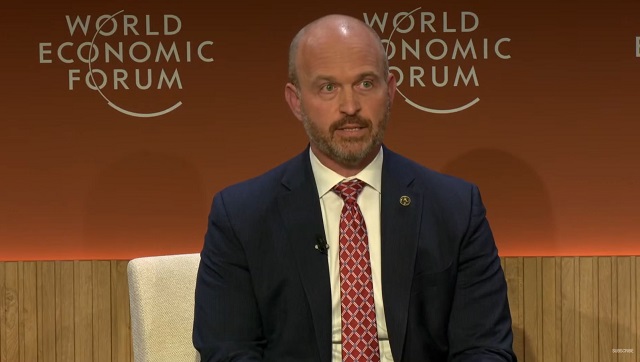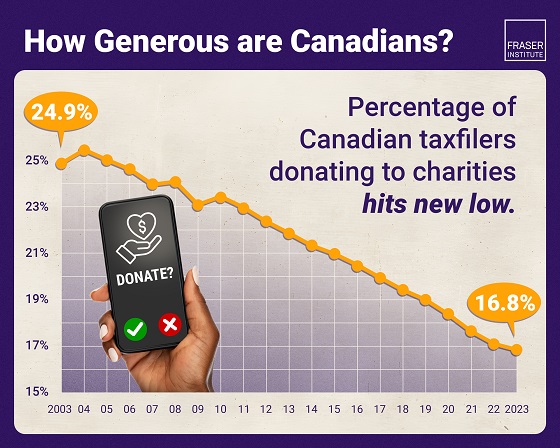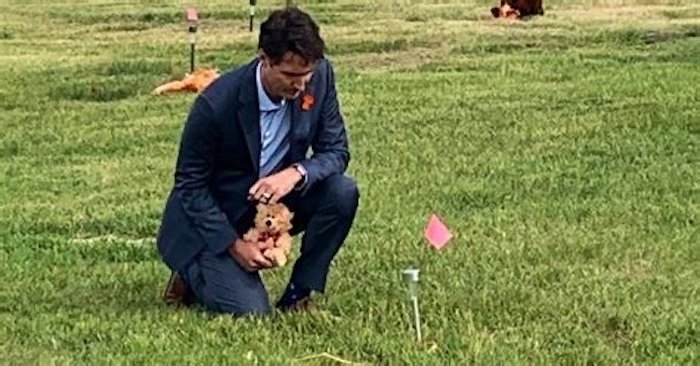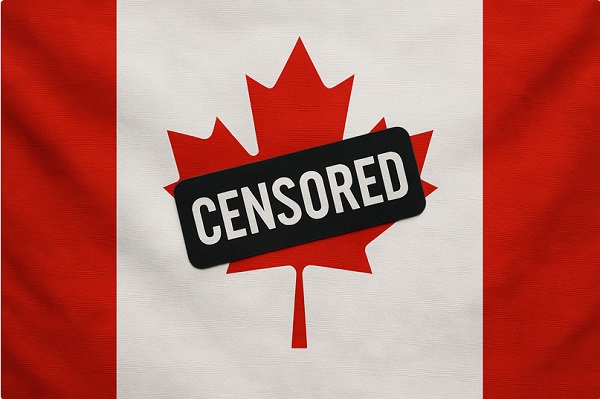Economy
Heritage Foundation president tells Davos: Future Trump admin must reject all WEF ideas

Heritage Foundation President Kevin Roberts at the World Economic Forum meeting in Davos
From LifeSiteNews
The Heritage Foundation’s Kevin Roberts said that everyone in the next administration must ‘compile a list of everything that’s ever been proposed at the World Economic Forum’ and object to ‘all of them, wholesale.’
The president of the conservative Heritage Foundation in said in his appearance at Davos that the next Republican administration needs to reject “everything that’s ever been proposed at the World Economic Forum.”
Kevin Roberts, head of the Heritage Foundation, the leading conservative think tank in the U.S., said during a panel discussion called “What to Expect from a Possible Republican Administration?” that “the kind of person who will come into the next conservative administration is going to be governed by one principle and that is destroying the grasp that political elites and unelected technocrats have over the average person.”
BREAKING – @Heritage President @KevinRobertsTX calls out globalist elites at WEF
He said the next Republican administration needs to “compile a list of everything that’s ever been proposed at the World Economic Forum and object [to] all of them, wholesale.” #WEF24 pic.twitter.com/DXmlZUoCOA
— Andreas Wailzer (@Andreas_Wailzer) January 18, 2024
“And if I may, I will be candid and say that the agenda that every single member of the administration needs to have is to compile a list of everything that’s ever been proposed at the World Economic Forum and object [to] all of them, wholesale.”
“Anyone not prepared to do that and take away this power of the unelected bureaucrats and give it back to the American people in unprepared to be part of the next conservative administration.”
Trump admin will ‘trust the science’ and reject push of gender ideology
Roberts said that the idea that the WEF is defending “liberal democracy” and the suggestion that Trump would be a “dictator” are both “laughable.”
My message to the self-appointed global elites: Your time is up. pic.twitter.com/Wj2Bntjztz
— Kevin Roberts (@KevinRobertsTX) January 18, 2024
“Whoever is the next conservative president is going to take on the power of the elites,” he declared.
“Political elites tell the average people on three or four or five issues, that the reality is X, when in fact reality is Y.”
Roberts went on to list five things as examples that President Trump will take on if he is elected:
“Take immigration: elites tell us that open borders and even illegal immigration are okay, the average person tells us in the United States that both rob them of the American way of life.”
“Elites also tell us that public safety isn’t a problem in American cities. Just travel to New York or Washington or Dallas, Texas. The average person will tell you that the lack of public safety damages not just the American way of life but their life.”
“Thirdly, I guess the favorite at the World Economic Forum, is climate change. Elites tell us that we have this existential crisis with so-called ‘climate change,’ so much so that climate alarmism is probably the greatest cause for [the] mental health crisis in the world. The solutions, the average person knows, based on climate change are far worse and more harmful and cost more human lives, especially in Europe during the time that you need heating, than to the problems themselves.”
“The fourth: China. The number one adversary not just to the United States but to free people on planet Earth. Not only do we at Davos not say that, we give the Chinese Communist Party a platform. Count on President Trump ending that nonsense.”
“And fifth, another supernational organization, the World Health Organization, is discussing foisting gender ideology upon [the] Global South. These are practices that are under review if not being rejected, by countries in Northern Europe.”,
“The new president, especially if it is President Trump, will, as you like to say, ‘trust the science.’ He will understand the basic biological reality of manhood and womanhood.”
“I think President Trump, if in fact he wins a second term, is going to be inspired by the wise words of Javier Milei, who said that he was in power not to guide sheep but to awaken lions,” Roberts concluded.
Roberts: ‘I’ll probably never be invited back’ to the WEF
In a video published on his X account shortly before his appearance in Davos, Roberts said that “for too long, the self-appointed globalist elites at the World Economic Forum in Davos Switzerland have lorded over you and me.”
This morning, I'll be joining #WEF24 to usher the Davoisie into early retirement. Tune in live at 10:15 a.m. EST.
🔗: https://t.co/VIJtdayL8b pic.twitter.com/Oozlr19HmW
— Kevin Roberts (@KevinRobertsTX) January 18, 2024
“And you’ll never guess, the president of the Heritage Foundation was invited this year to go, and against my preference, I’m going, on your behalf, to read those people the riot act.”
“Their time of lording over us has come to an end, whether it’s COVID lockdowns, riding over there in their beautiful fancy private jets while lecturing us at the same time, sometimes while on the plane, that climate change is an existential threat.”
“I’m going to talk about all of it. I’ll probably never be invited back, but considering I never wanted to go in the first place, I look forward to it.”
Economy
Affordable housing out of reach everywhere in Canada

From the Fraser Institute
By Steven Globerman, Joel Emes and Austin Thompson
According to our new study, in 2023 (the latest year of comparable data), typical homes on the market were unaffordable for families earning the local median income in every major Canadian city
The dream of homeownership is alive, but not well. Nearly nine in ten young Canadians (aged 18-29) aspire to own a home—but share a similar worry about the current state of housing in Canada.
Of course, those worries are justified. According to our new study, in 2023 (the latest year of comparable data), typical homes on the market were unaffordable for families earning the local median income in every major Canadian city. It’s not just Vancouver and Toronto—housing affordability has eroded nationwide.
Aspiring homeowners face two distinct challenges—saving enough for a downpayment and keeping up with mortgage payments. Both have become harder in recent years.
For example, in 2014, across 36 of Canada’s largest cities, a 20 per cent downpayment for a typical home—detached house, townhouse, condo—cost the equivalent of 14.1 months (on average) of after-tax income for families earning the median income. By 2023, that figure had grown to 22.0 months—a 56 per cent increase. During the same period for those same families, a mortgage payment for a typical home increased (as a share of after-tax incomes) from 29.9 per cent to 56.6 per cent.
No major city has been spared. Between 2014 and 2023, the price of a typical home rose faster than the growth of median after-tax family income in 32 out of 36 of Canada’s largest cities. And in all 36 cities, the monthly mortgage payment on a typical home grew (again, as a share of median after-tax family income), reflecting rising house prices and higher mortgage rates.
While the housing affordability crisis is national in scope, the challenge differs between cities.
In 2023, a median-income-earning family in Fredericton, the most affordable large city for homeownership in Canada, had save the equivalent of 10.6 months of after-tax income ($56,240) for a 20 per cent downpayment on a typical home—and the monthly mortgage payment ($1,445) required 27.2 per cent of that family’s after-tax income. Meanwhile, a median-income-earning family in Vancouver, Canada’s least affordable city, had to spend the equivalent of 43.7 months of after-tax income ($235,520) for a 20 per cent downpayment on a typical home with a monthly mortgage ($6,052) that required 112.3 per cent of its after-tax income—a financial impossibility unless the family could rely on support from family or friends.
The financial barriers to homeownership are clearly greater in Vancouver. But, crucially, neither city is truly “affordable.” In Fredericton and Vancouver, as in every other major Canadian city, buying a typical home with the median income produces a debt burden beyond what’s advisable. Recent house price declines in cities such as Vancouver and Toronto have provided some relief, but homeownership remains far beyond the reach of many families—and a sharp slowdown in homebuilding threatens to limit further gains in affordability.
For families priced out of homeownership, renting doesn’t offer much relief, as rent affordability has also declined in nearly every city. In 2014, rental rates for the median-priced rental unit required 19.8 per cent of median after-tax family income, on average across major cities. By 2023, that figure had risen to 23.5 per cent. And in the least affordable cities for renters, Toronto and Vancouver, a median-priced rental required more than 30 per cent of median after-tax family income. That’s a heavy burden for Canada’s renters who typically earn less than homeowners. It’s also an added financial barrier to homeownership— many Canadian families rent for years before buying their first home, and higher rents make it harder to save for a downpayment.
In light of these realities, Canadians should ask—why have house prices and rental rates outpaced income growth?
Poor public policy has played a key role. Local regulations, lengthy municipal approval processes, and costly taxes and fees all combine to hinder housing development. And the federal government allowed a historic surge in immigration that greatly outpaced new home construction. It’s simple supply and demand—when more people chase a limited (and restricted) supply of homes, prices rise. Meanwhile, after-tax incomes aren’t keeping pace, as government policies that discourage investment and economic growth also discourage wage growth.
Canadians still want to own homes, but a decade of deteriorating affordability has made that a distant prospect for many families. Reversing the trend will require accelerated homebuilding, better-paced immigration and policies that grow wages while limiting tax bills for Canadians—changes governments routinely promise but rarely deliver.
Business
The world is no longer buying a transition to “something else” without defining what that is

From Resource Works
Even Bill Gates has shifted his stance, acknowledging that renewables alone can’t sustain a modern energy system — a reality still driving decisions in Canada.
You know the world has shifted when the New York Times, long a pulpit for hydrocarbon shame, starts publishing passages like this:
“Changes in policy matter, but the shift is also guided by the practical lessons that companies, governments and societies have learned about the difficulties in shifting from a world that runs on fossil fuels to something else.”
For years, the Times and much of the English-language press clung to a comfortable catechism: 100 per cent renewables were just around the corner, the end of hydrocarbons was preordained, and anyone who pointed to physics or economics was treated as some combination of backward, compromised or dangerous. But now the evidence has grown too big to ignore.
Across Europe, the retreat to energy realism is unmistakable. TotalEnergies is spending €5.1 billion on gas-fired plants in Britain, Italy, France, Ireland and the Netherlands because wind and solar can’t meet demand on their own. Shell is walking away from marquee offshore wind projects because the economics do not work. Italy and Greece are fast-tracking new gas development after years of prohibitions. Europe is rediscovering what modern economies require: firm, dispatchable power and secure domestic supply.
Meanwhile, Canada continues to tell itself a different story — and British Columbia most of all.
A new Fraser Institute study from Jock Finlayson and Karen Graham uses Statistics Canada’s own environmental goods and services and clean-tech accounts to quantify what Canada’s “clean economy” actually is, not what political speeches claim it could be.
The numbers are clear:
- The clean economy is 3.0–3.6 per cent of GDP.
- It accounts for about 2 per cent of employment.
- It has grown, but not faster than the economy overall.
- And its two largest components are hydroelectricity and waste management — mature legacy sectors, not shiny new clean-tech champions.
Despite $158 billion in federal “green” spending since 2014, Canada’s clean economy has not become the unstoppable engine of prosperity that policymakers have promised. Finlayson and Graham’s analysis casts serious doubt on the explosive-growth scenarios embraced by many politicians and commentators.
What’s striking is how mainstream this realism has become. Even Bill Gates, whose philanthropic footprint helped popularize much of the early clean-tech optimism, now says bluntly that the world had “no chance” of hitting its climate targets on the backs of renewables alone. His message is simple: the system is too big, the physics too hard, and the intermittency problem too unforgiving. Wind and solar will grow, but without firm power — nuclear, natural gas with carbon management, next-generation grid technologies — the transition collapses under its own weight. When the world’s most influential climate philanthropist says the story we’ve been sold isn’t technically possible, it should give policymakers pause.
And this is where the British Columbia story becomes astonishing.
It would be one thing if the result was dramatic reductions in emissions. The provincial government remains locked into the CleanBC architecture despite a record of consistently missed targets.
Since the staunchest defenders of CleanBC are not much bothered by the lack of meaningful GHG reductions, a reasonable person is left wondering whether there is some other motivation. Meanwhile, Victoria’s own numbers a couple of years ago projected an annual GDP hit of courtesy CleanBC of roughly $11 billion.
But here is the part that would make any objective analyst blink: when I recently flagged my interest in presenting my research to the CleanBC review panel, I discovered that the “reviewers” were, in fact, two of the key architects of the very program being reviewed. They were effectively asked to judge their own work.
You can imagine what they told us.
What I saw in that room was not an evidence-driven assessment of performance. It was a high-handed, fact-light defence of an ideological commitment. When we presented data showing that doctrinaire renewables-only thinking was failing both the economy and the environment, the reception was dismissive and incurious. It was the opposite of what a serious policy review looks like.
Meanwhile our hydro-based electricity system is facing historic challenges: long term droughts, soaring demand, unanswered questions about how growth will be powered especially in the crucial Northwest BC region, and continuing insistence that providers of reliable and relatively clean natural gas are to be frustrated at every turn.
Elsewhere, the price of change increasingly includes being able to explain how you were going to accomplish the things that you promise.
And yes — in some places it will take time for the tide of energy unreality to recede. But that doesn’t mean we shouldn’t be improving our systems, reducing emissions, and investing in technologies that genuinely work. It simply means we must stop pretending politics can overrule physics.
Europe has learned this lesson the hard way. Global energy companies are reorganizing around a 50-50 world of firm natural gas and renewables — the model many experts have been signalling for years. Even the New York Times now describes this shift with a note of astonishment.
British Columbia, meanwhile, remains committed to its own storyline even as the ground shifts beneath it. This isn’t about who wins the argument — it’s about government staying locked on its most basic duty: safeguarding the incomes and stability of the families who depend on a functioning energy system.
Resource Works News
-

 Bruce Dowbiggin2 hours ago
Bruce Dowbiggin2 hours agoWayne Gretzky’s Terrible, Awful Week.. And Soccer/ Football.
-

 espionage5 hours ago
espionage5 hours agoWestern Campuses Help Build China’s Digital Dragnet With U.S. Tax Funds, Study Warns
-

 Agriculture42 mins ago
Agriculture42 mins agoCanada’s air quality among the best in the world
-

 Business3 hours ago
Business3 hours agoCanada invests $34 million in Chinese drones now considered to be ‘high security risks’
-

 Economy4 hours ago
Economy4 hours agoAffordable housing out of reach everywhere in Canada
-

 Business2 days ago
Business2 days agoAlbertans give most on average but Canadian generosity hits lowest point in 20 years
-

 Fraser Institute1 day ago
Fraser Institute1 day agoClaims about ‘unmarked graves’ don’t withstand scrutiny
-

 Censorship Industrial Complex2 days ago
Censorship Industrial Complex2 days agoOttawa’s New Hate Law Goes Too Far







